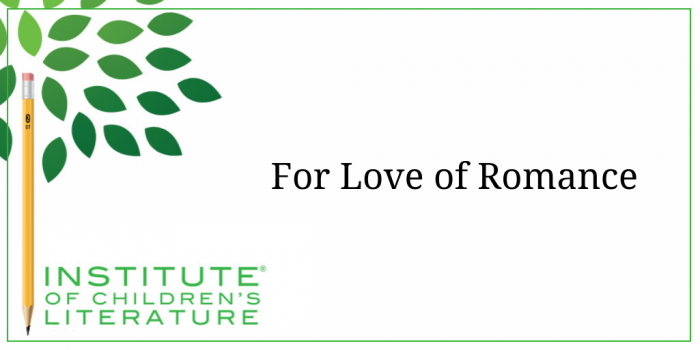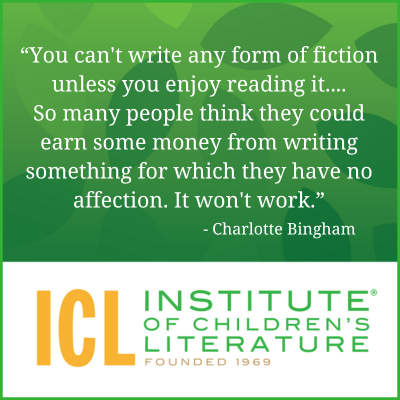1000 N. West Street #1200, Wilmington, DE 19801
© 2024 Direct Learning Systems, Inc. All rights reserved.

The Romance novel is an example of the kind of evergreen genre that simply never stops selling and selling well. Not only that, but in young adult (YA) novels, some strong romantic element is nearly a requirement. YA authors often report being asked to strengthen the romantic element or add one if none exists. However, the whole novel doesn’t necessarily need to be a romance in YA.

Whether writing young adult or adult romance fiction, the evolution of the relationship in a romance plot almost always has three basic stages: Sparks, Burned, and Healing/Discovery. But within this fairly straightforward three-step process an amazing variety of experiences can be built.
In young adult romance especially, the initial spark in the romance often comes with the main character’s discovery of the other person’s hotness. In other words, the initial spark is often ignited by physical attraction. Sometimes it’s the discovery that someone you’ve known a long time is actually quite cute. Or sometimes it’s the arrival of the new and staggeringly hot stranger. (Or the main character is the one to come into a new situation where the staggeringly hot stranger exists.) That initial spark is the point where one character notices the other in a way that transcends friendship.
But a truly interesting relationship is about much more than the spark. If the only thing two people have in common is physical attraction, the relationship has no real chance of succeeding. And it’s not uncommon for young adult novels to begin with the protagonist in a relationship that is clearly based on physical attraction and is fizzling out without nothing else to support it. In these situations, the main character begins the novel in a bad relationship like this, only to find that spark with another character which leads to the complexity of untangling from one person in order to end up with the right one. When the main character finds the right one, the spark is backed up by more than physical attraction.
You’ll know if you’ve got a real spark going if your main character thinks about more than the other person’s looks whenever the potential love interest comes to mind. Consider also the dialogue you’re writing between them. Does the dialogue also reflect a spark that has more than one dimension?
As Shakespeare’s Lysander once told us, “The course of true love never did run smooth.” Relationships are hard and a bit fragile, especially when they are young. It’s easy to damage a budding relationship. And in a plot, difficulty is essential. The difficulties in the main relationship need to flow logically from the plot you are employing for the larger story.
The difficulties need to make sense, and they really should be based on something other than the main characters being stupid. (For instance, if the main character has some irrational fear of letting her new crush know she’s allergic to peanuts so she eats the candy bar he offers only to blow up like a balloon and need to go to the hospital. This is going to hurt the relationship, but it also makes us respect the main character’s intelligence a bit less. We need to like the protagonists, not be constantly annoyed by them.)
Everyone makes mistakes, but take care not to lose the respect of the reader via the mistakes you choose for your story. The mistake needs to be something the reader can relate to and believe in, at least for the characters and situation you have created.
As author David Levithan once told The Atlantic, “The defining characteristic of YA literature is emotional truth.” This means the decisions your character makes should “make emotional sense to us, even when she makes the wrong ones.” So as your characters make the mistakes that lead to bumps in the plot, be sure every mistake feels true.

As you build the bumps in the romantic road, keep in mind that romance is going to be a fairly new thing for your characters. It may not be the character’s first romance, but the young person is probably not deeply jaded from repeated romantic fails either.
This very newness to romantic relationships will logically lead to missteps and failings that grow out of immaturity and inexperience. Sometimes careless things are said or fights grow out of misunderstandings. Decisions must be made about the physical progress of the relationship and that can lead to conflict sometimes as well. Again, when you build bumps conflicts emerge logically from of the characters themselves and the situation they are in. Don’t throw down bumps for the sake of bumps, instead look for the bumps these two unique people are truly likely to have and explore those.
One of the “rules” of an adult romance novel is that the romance has a happy ending with the two characters together and the reader believing they will spend the rest of their lives that way. Now this rule can be (and sometimes is) bent pretty hard in YA. At its heart, The Fault in Our Stars by John Green is a romance, but it very much does not have a happy ending for the two protagonists. Basically, it can’t. Not with the facts of the characters’ lives. But it does have the progression of the romance, a feeling of true emotion, and some lovely happy moments. The relationship feels strong right and whole in the moments before disaster hits. That sense of a healed, whole, strong relationship is sometimes close enough to a happy ending to work.
One of the reasons teen romance doesn’t necessarily have a sense that these two will be together for all time is because teen romance is often more of an exploration of relationships than a commitment to forever. Most teen romances in the real world don’t last forever. Teen life is all about change so romance is fitting within that constantly changing world. But teen romance often has the sense of transformation. The romance has helped the characters heal in some way. The romance has helped the characters grow in some way. The romance has helped the characters connect. And that sense of maturing is often enough of an “ever after.” With the constant change in teen lives, a permanent happily ever after feels unlikely even to them.
Young adult novels, in general, don’t depend on happy endings, but they do tend to depend on hope. The very act of being a teenager requires having hope as young people navigate the complexity of getting through and growing up. So give your romance a chance to help the characters grow toward maturity and wholeness. Give them times of healthy connectedness. And give them hope. Do that and you’ll have the kind of romance teen readers love.
With over 100 books in publication, Jan Fields writes both chapter books for children and mystery novels for adults. She’s also known for a variety of experiences teaching writing, from one session SCBWI events to lengthier Highlights Foundation workshops to these blog posts for the Institute of Children’s Literature. As a former ICL instructor, Jan enjoys equipping writers for success in whatever way she can.
1000 N. West Street #1200, Wilmington, DE 19801
© 2024 Direct Learning Systems, Inc. All rights reserved.
1000 N. West Street #1200, Wilmington, DE 19801
© 2024 Direct Learning Systems, Inc. All rights reserved.
1000 N. West Street #1200, Wilmington, DE 19801
© 2024 Direct Learning Systems, Inc. All rights reserved.
1000 N. West Street #1200, Wilmington, DE 19801
© 2024 Direct Learning Systems, Inc. All rights reserved.

1000 N. West Street #1200, Wilmington, DE 19801
© 2025 Direct Learning Systems, Inc. All rights reserved.

1000 N. West Street #1200, Wilmington, DE 19801
©2025 Direct Learning Systems, Inc. All rights reserved. Privacy Policy.
3 Comments